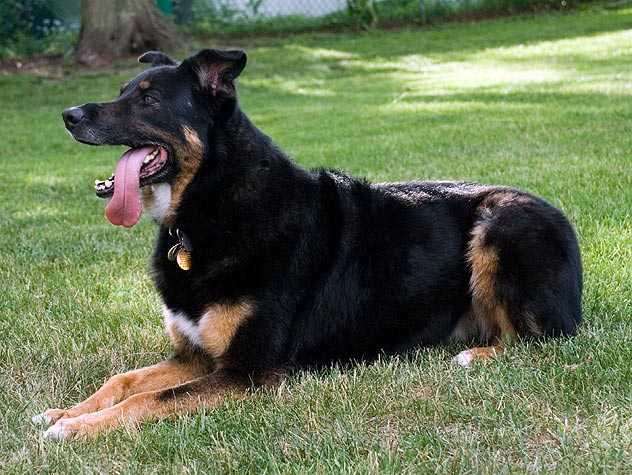How Much Should You Keep Your Dog Outdoors?

If you live in the city, your urban canine is probably on a three-walk-a-day schedule for exercising, socializing, and eliminating. But if your home comes equipped with a yard and a fence, keeping a dog becomes much easier. The simplicity of giving your dog his morning constitutional while you're still garbed in a robe and slippers can't be beat. Add a dog door, and you don't even have to get out of bed! Phydeau can meet his own needs on his own schedule. However, some dog guardians use the yard as a crutch, and, before you know it, the backyard becomes Phydeau's entire world. How much is too much of a good thing?
Who Put the Dog Out?
When dogs become adolescents, they can't seem to get enough exercise, and their inconsistencies often frustrate their owners. One day Phydeau seems all grown up; the next day, he's chewing his way through the house like a buzz saw. In a fit of pique, Phydeau's owner banishes him to the backyard. At first it may be just during meals to prevent begging, or when company comes, to prevent jumping. Next, it's during work hours so he doesn't soil or chew when left alone. Before long, the only time Phydeau sees the inside of the house is during storms or winter freezes. Is this any life for a dog?
Turning a rambunctious adolescent into a backyard dog doesn't solve anything. It merely brings temporary relief. True, your dog can't climb into cranky old Aunt Edna's lap if he's outdoors, but he'll also never learn how to behave appropriately around house guests.
A dog who's kept outside experiences social isolation. He may engage in excessive barking and howling in an attempt to reunite his pack. When a family member enters the yard to spend some time with him, he erupts into rapturous leaps and vocalizations, displaying a level of enthusiasm certain to squelch any possibility that that person will ever make a return visit.
Over time, an isolated outdoor dog will become exceedingly independent and difficult to train. Whatever desire he had to please will be gone, replaced by the need to occupy his time in any way possible. His motto becomes "If it feels good, do it!" Dig up the tulip bulbs. Excavate a cooling pit. Fence-fight with the dog next door. Without human feedback to the contrary, these are all rewarding activities for a backyard dog. There is nothing wrong with letting a well-mannered dog spend a lazy day lying in the grass, soaking up the sun, or playing in the fallen leaves. But when the yard takes the place of teaching your dog appropriate house manners, you need to step back and examine why you have a dog.
Come Rain or Come Shine
If your dog enjoys spending a considerable amount of time outside, he needs protection from the elements. A doghouse can offer access to cool shade on a hot day or shelter from the cold, rain, or wind. When providing a doghouse, make sure the opening does not face into the wind during the coldest months of the year. If the opening is large, hang some carpet strips over the doorway to keep heat in and cold out; and provide good insulated bedding, such as straw, to keep the dog up off cold ground. Remember to clean the place out every few months to ensure that no other beasties have set up house—a nest of yellow jackets was discovered in one poor Brittany spaniel's outdoor shelter.
If your dog spends more than an hour outdoors on a hot day or several hours outside other times of the year, make sure he has fresh water available. Weigh down his water container, or affix it to a stationary object in such a way that he can't easily tip it over. His meals are best served in your house, because leftover food will attract unwanted insects and possibly wildlife.
For situations where there is either no fence or a need to keep Phydeau out of certain areas such as your begonia bed, build a sturdy exercise pen where he can do dog "things" without incurring the wrath of family gardeners or neighbors. If you live in a community that prohibits fences, an overhead trolley cable may be the answer. However, these lines aren't safe for dogs with powerful acceleration, such as greyhounds. The impact when they hit the end of the line is considerable, and spinal cord damage is likely. Staked chains should be avoided because they can kink and tangle, and injure the dog.
Dogs are companion animals and, as such, belong in our homes and in our lives. Just because you have a backyard doesn't mean that Phydeau should be restricted to it. Take the time to teach him house manners and socialize him to the world beyond your property, and you will discover you have within him the best possible companion.